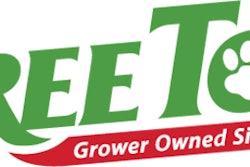
There are some key trends to look for in pet food's future. | (Ksyu Deniska | shutterstock.com)
While 2020 has been a year for the ages, the pet food market may emerge fairly sound, given rising pet ownership and the history of pet owners doing all they can to keep their beloved pets and feed them well, even during financial stress. To prepare for that emergence, here are five trends and opportunities for pet food companies to consider through the rest of 2020 and into the post-pandemic recovery.
- Health and wellness are still important. Their pets’ well-being has always been paramount for owners, and a health crisis like COVID-19 makes such concerns even more front and center for all family members, including furry ones. A recent report from ingredients supplier Kerry showed 75% of U.S. dog and cat owners agreed that pets with specific health issues can benefit from formulations targeting those conditions.
- Fresh: the new superpremium? In its own recent report, Packaged Facts suggested that with fresh being a longtime top selling point for human foods, it could become the new wave of superpremium pet food, creating a market differentiator now that so many traditional premium products are available everywhere. Most up-and-coming fresh pet food companies also offer customized formulations, another growing opportunity. In a recent blog post, Jeannie Swedburg of Tree Top Ingredients cited data from IRI that 16% of U.S. pet owners would like to see more freshly prepared, refrigerated food.
- Ancient grains still carrying over from DCM controversy. In the wake of the Food and Drug Administration’s investigation into a possible, still unproven link between grain-free pet food and canine dilated cardiomyopathy (DCM) and consumers’ understandable anxiety around it, many pet food brands launched products featuring grains, especially the ancient grains so popular in human food. This trend shows no sign of slowing.
- Sourcing, ethical, humane, sustainability claims. Pre-COVID-19, pet owners were paying more attention to where ingredients come from, how they’re harvested or raised and their impact on the environment. With the pandemic highlighting how human interaction with the natural world can be fraught with risk, this awareness only seems to keep growing, and recent data showed spending on sustainable products, including pet food and treats, has at least remained steady. The IRI data indicates 22% of pet owners are interested in seeing more sustainably sourced pet food.
- Private label boosted by financial hardship. A Packaged Facts April/May 2020 survey showed 47% of U.S. pet owners are buying store-brand pet products more often; in another survey two months before, 44% agreed that store brands are as good quality as national name brands. Despite pet owners’ deep loyalty to their pets, it’s almost certain some are suffering financial duress and will have to tighten their pet food spending, which could expand opportunity for private label.
Discover more pet food trends at Petfood Forum CONNECT: Log in on September 15.


















